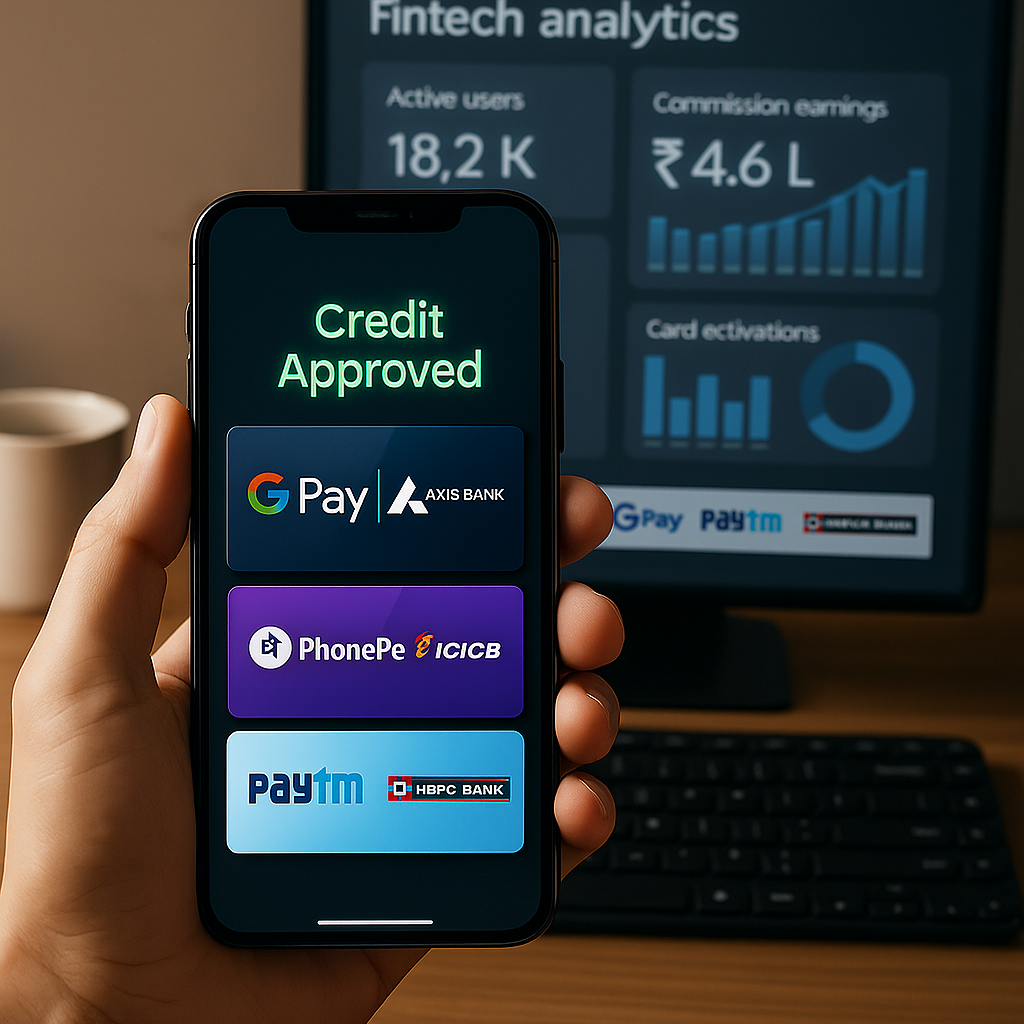With UPI transactions remaining free under government policy, India’s leading fintech players are entering the credit card market through co‑branded partnerships. Firms like Google Pay, PhonePe, and Paytm aim to monetize their massive user bases by tying up with banks to launch credit cards—unlocking steady revenue through card sourcing and increased customer engagement.
NewsBytes
Google Pay is in talks with Axis Bank to co‑launch a credit card, marking its entry into regulated financial products.
PhonePe recently launched its co‑branded card with HDFC Bank.
Fintechs typically earn ₹1,000–₹1,200 per sourced card and ~2% commission on personal loans.
Paytm disburses around ₹1,500 crore in personal loans per quarter via fintech apps.
Background and Context
Dominated by free UPI transactions, fintech apps are diversifying to maintain profitability. They partner with banks/NBFCs to source customers for credit products—earning commissions while offering exclusive benefits to users. These credit products include personal and gold loans, and increasingly, co‑branded credit cards.
Google Pay recently ventured into gold loans through Muthoot Finance and personal loans up to ₹10 lakh—and is now exploring credit cards with Axis Bank.
Expert Insights & Industry Perspective
Monetizing Engagement
“Fintechs which help source a credit card customer for banks can get around ₹1,000–₹1,200 as a sourcing commission,” explains a fintech startup founder.
Commission-Driven Strategy
“Personal loan products carry ~2% commission; gold loans less than 0.3%,” according to the same founder.
These partnerships deepen customer interaction and provide fintechs with a sustainable revenue model, leveraging their large, active user bases.
Broader Implications
1. Strengthening Fintech Profitability
Co‑branded credit cards allow fintechs to earn recurring revenue and move beyond one-time loan commissions—ensuring a steady monetization stream.
2. Enhanced Customer Loyalty
Exclusive rewards and integrated credit features keep users engaged on the fintech platform, reducing churn and increasing transactions.
3. Bank-Fintech Win-Win
Banks gain access to a rich source of vetted borrowers, reducing customer acquisition costs, while fintechs benefit financially and tactically.
Challenges & Risks
Quality of Borrowers:
Partner banks may reject low-credit-score applicants, limiting scale.Regulatory Oversight:
Stringent RBI norms for co‑branded cards require transparency, fair pricing, and consumer protection.Competitive Pressure:
As more fintechs enter this space, differentiated offerings and reward structures will be key to standing out.
What Lies Ahead
| Next Phase | Expected Impact |
|---|---|
| Google Pay–Axis Bank card launch | Validate credit as sustainable revenue for UPI apps |
| Expanded co‑branded portfolio (e.g. PhonePe) | Broader market competition, enhanced rewards structures |
| Entry of non‑UPI fintechs | Drive diversification in credit sourcing strategies |
| RBI introduces tighter co‑brand norms | Influence viability and partnerships surrounding new card launches |
Conclusion
Fintech companies are strategically pivoting into co‑branded credit cards to offset free UPI trades and build sustainable revenue streams. With high commissions, deep user engagement, and bank-aligned customer acquisition, this trend could redefine India’s credit ecosystem. Its success, however, depends on loan quality, regulatory compliance, and the ability to offer compelling rewards. The coming months will reveal whether these partnerships can deliver long-term returns and industry transformation.












